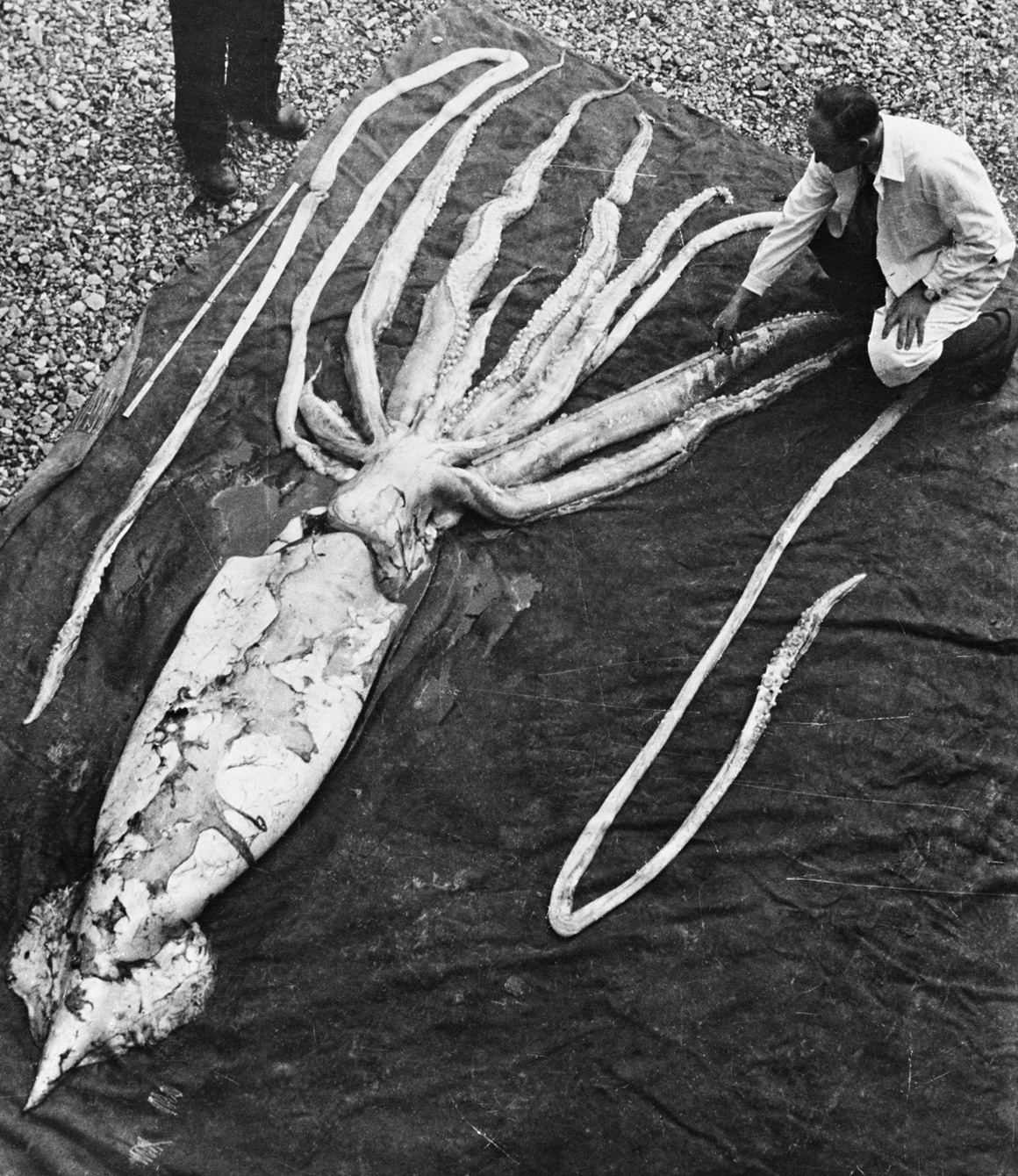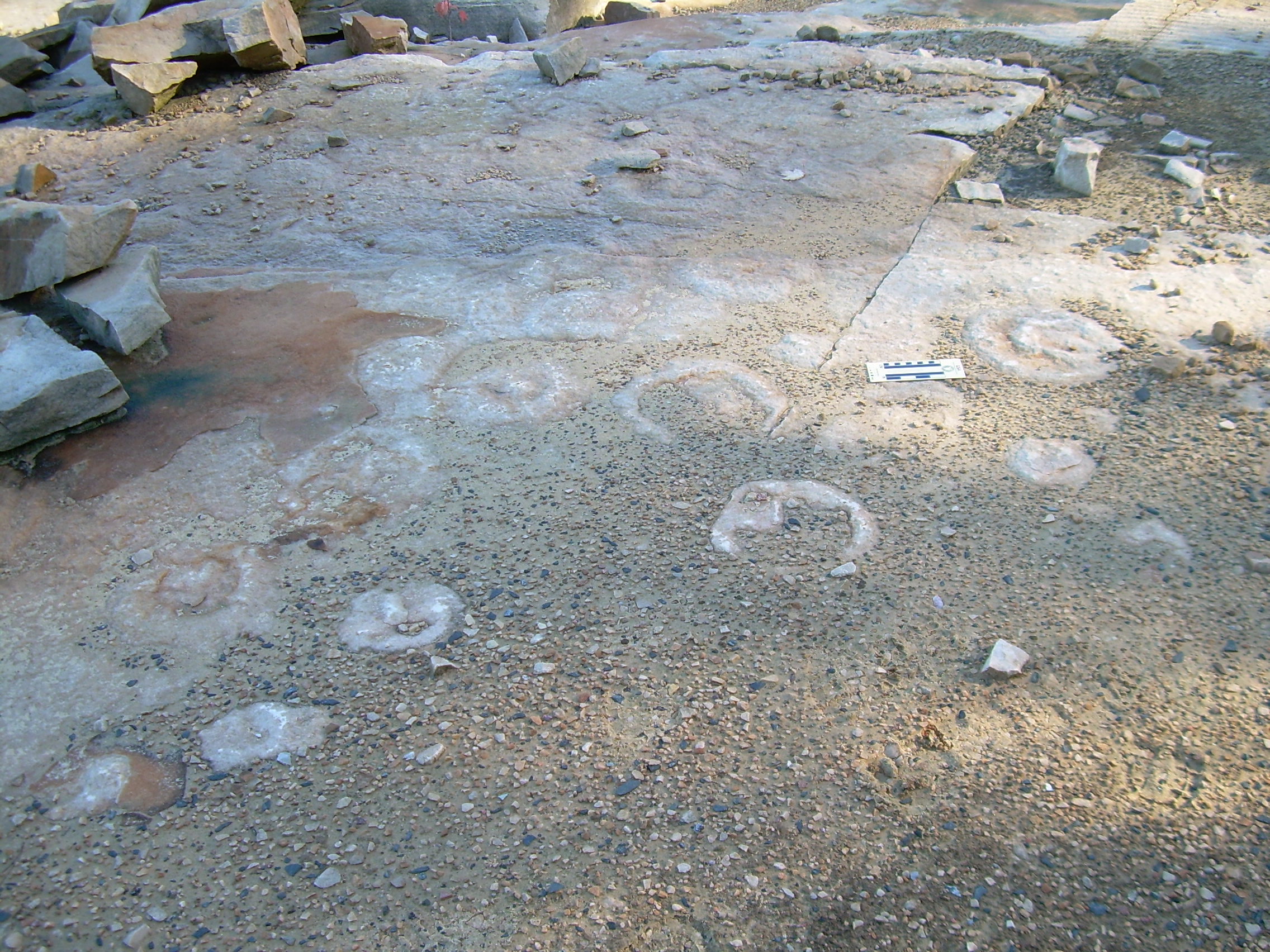|
Tiburonia
''Tiburonia'' is a genus of jellyfish in the family Ulmaridae. It was reported in 2003, following the discovery of its only species yet identified, ''Tiburonia granrojo''. It was discovered by a crew from MBARI led by George Matsumoto. Pieces of the medusae (bell margin and arms) were collected for morphological analysis, which eventually led to sequencing and taxonomic identification. The discovery of this organism led to not only a new species, but a new subfamily of Ulmaridae, called Tiburoniinae. Its genus was named ''Tiburonia'' after the ROV the crew were using, called ''Tiburon'', meaning "shark" in Spanish. Because of this ROVs distinct maneuverability, all angles of the organisms were able to be observed, which is particularly important to the study of gelatinous pelagic invertebrates. Its species name was originally to be called "big ugly", but Kirsten Matsumoto, George Matsumoto's Wife, raised objections to this name, and renamed it ''granrojo'', meaning "big red" in S ... [...More Info...] [...Related Items...] OR: [Wikipedia] [Google] [Baidu] |
Monterey Bay Aquarium Research Institute
The Monterey Bay Aquarium Research Institute (MBARI) is a private, non-profit oceanographic research center in Moss Landing, California. MBARI was founded in 1987 by David Packard, and is primarily funded by the David and Lucile Packard Foundation. Christopher Scholin serves as the institute's president and chief executive officer, managing a work force of approximately 220 scientists, engineers, and operations and administrative staff. At MBARI, scientists and engineers work together to develop new tools and methods for studying the ocean. Long-term funding from the David and Lucile Packard Foundation allows the institute to take on studies that traditional granting institutions may be reluctant to sponsor. Part of David Packard's charge for MBARI was to "Take risks. Ask big questions. Don't be afraid to make mistakes; if you don't make mistakes, you're not reaching far enough." MBARI's campus in Moss Landing is located near the center of Monterey Bay, at the head of the Monterey ... [...More Info...] [...Related Items...] OR: [Wikipedia] [Google] [Baidu] |
Ulmaridae
The Ulmaridae are a family of jellyfish. Genera Formerly, the genus '' Phacellophora'' was also included in this family, but is now placed in the family Phacellophoridae.Straehler-Pohl, I., C. L. Widmer, and A. C. Morandini (2011). ''Characterizations of juvenile stages of some semaeostome Scyphozoa (Cnidaria), with recognition of a new family (Phacellophoridae).'' Zootaxa 2741: 1-37 *''Aurelia'' (includes the moon jelly) *'' Aurosa'' *'' Deepstaria'' *'' Diplulmaris'' *'' Discomedusa'' *'' Floresca'' *'' Parumbrosa'' *'' Poralia'' *'' Stellamedusa'' *'' Sthenonia'' *'' Stygiomedusa (the giant phantom jelly)'' *''Tiburonia ''Tiburonia'' is a genus of jellyfish in the family Ulmaridae. It was reported in 2003, following the discovery of its only species yet identified, ''Tiburonia granrojo''. It was discovered by a crew from MBARI led by George Matsumoto. Pieces of ...'' *'' Ulmaris'' References Semaeostomeae Cnidarian families {{Scyphozoa-stub ... [...More Info...] [...Related Items...] OR: [Wikipedia] [Google] [Baidu] |
Deep-sea Gigantism
In zoology, deep-sea gigantism or abyssal gigantism is the tendency for species of invertebrates and other deep-sea dwelling animals to be larger than their shallower-water relatives across a large taxonomic range. Proposed explanations for this type of gigantism include colder temperature, food scarcity, reduced predation pressure and increased dissolved oxygen concentrations in the deep sea. The inaccessibility of abyssal habitats has hindered the study of this topic. Taxonomic range In marine crustaceans, the trend of increasing size with depth has been observed in mysids, euphausiids, decapods, isopods and amphipods. Non-arthropods in which deep-sea gigantism has been observed are cephalopods, cnidarians, and eels from the order Anguilliformes. Examples of deep-sea gigantism include the big red jellyfish, the giant isopod, giant ostracod, the giant sea spider, the giant amphipod, the Japanese spider crab, the giant oarfish, the deepwater stingray, the seven-arm ... [...More Info...] [...Related Items...] OR: [Wikipedia] [Google] [Baidu] |
Jellyfish
Jellyfish and sea jellies are the informal common names given to the medusa-phase of certain gelatinous members of the subphylum Medusozoa, a major part of the phylum Cnidaria. Jellyfish are mainly free-swimming marine animals with umbrella-shaped bells and trailing tentacles, although a few are anchored to the seabed by stalks rather than being mobile. The bell can pulsate to provide propulsion for highly efficient animal locomotion, locomotion. The tentacles are armed with Cnidocyte, stinging cells and may be used to capture prey and defend against predators. Jellyfish have a complex Biological life cycle, life cycle; the medusa is normally the sexual phase, which produces planula larvae that disperse widely and enter a sedentary polyp (zoology), polyp phase before reaching sexual maturity. Jellyfish are found all over the world, from surface waters to the deep sea. Scyphozoans (the "true jellyfish") are exclusively marine habitats, marine, but some hydrozoans with a simila ... [...More Info...] [...Related Items...] OR: [Wikipedia] [Google] [Baidu] |
National Museum Of Nature And Science
The is in the northeast corner of Ueno Park in Tokyo. The museum has exhibitions on pre-Meiji period, Meiji science in Japan. It is the venue of the taxidermied bodies of the legendary dogs Hachikō and Taro and Jiro. A life-size blue whale model and a steam locomotive are also on display outside. History file:NMNC02s3200.jpg , Blue whale Life size model. Opened in 1871, it has had several names, including Ministry of Education Museum, Tokyo Museum, Tokyo Science Museum, the National Science Museum of Japan, and the National Museum of Nature and Science as of 2007. It was renovated in the 1990s and 2000s, and offers a wide variety of natural history exhibitions and interactive scientific experiences. It was completed as the main building of the Tokyo Science Museum in September 1931 as part of the reconstruction project after the Great Kanto Earthquake. Neo-Renaissance style. Designed by Kenzo Akitani, an engineer of the Ministry of Education, Culture, Sports, Science and Tec ... [...More Info...] [...Related Items...] OR: [Wikipedia] [Google] [Baidu] |
Western North American Coastal Fauna
Western may refer to: Places *Western, Nebraska, a village in the US *Western, New York, a town in the US *Western Creek, Tasmania, a locality in Australia *Western Junction, Tasmania, a locality in Australia *Western world, countries that identify with shared "Western" culture Arts and entertainment Films * ''Western'' (1997 film), a French road movie directed by Manuel Poirier * ''Western'' (2017 film), a German-Austrian film Genres *Western (genre), a category of fiction and visual art centered on the American Old West **Western fiction, the Western genre as featured in literature **Western music (North America), a type of American folk music Music * ''Westerns'' (EP), an EP by Pete Yorn *WSTRN, a British hip hop group from west London Business *The Western, a closed hotel/casino in Las Vegas, United States *Western Cartridge Company, a manufacturer of ammunition *Western Publishing, a defunct publishing company Educational institutions *Western Washington University i ... [...More Info...] [...Related Items...] OR: [Wikipedia] [Google] [Baidu] |
Marine Fauna Of The Gulf Of California
Marine is an adjective meaning of or pertaining to the sea or ocean. Marine or marines may refer to: Ocean * Maritime (other) * Marine art * Marine biology * Marine debris * Marine habitats * Marine life * Marine pollution Military * Marines, a naval-based infantry force ** United States Marine Corps ** Royal Marines of the UK ** Brazilian Marine Corps ** Spanish Marine Infantry ** Fusiliers marins (France) ** Indonesian Marine Corps ** Republic of China Marine Corps ** Republic of Korea Marine Corps ** Royal Thai Marine Corps *"Marine" also means "navy" in several languages: ** Austro-Hungarian Navy () ** Belgian Navy (, , ) ** Royal Canadian Navy () *** Provincial Marine (1796–1910), a predecessor to the Royal Canadian Navy ** Navy of the Democratic Republic of the Congo () ** Royal Danish Navy () ** Finnish Navy (, ) ** French Navy () ** Gabonese Navy () ** German Navy () ** Royal Moroccan Navy () ** Royal Netherlands Navy () ** Swedish Navy () Places * Marines ... [...More Info...] [...Related Items...] OR: [Wikipedia] [Google] [Baidu] |
Marine Fauna Of North America
Marine is an adjective meaning of or pertaining to the sea or ocean. Marine or marines may refer to: Ocean * Maritime (other) * Marine art * Marine biology * Marine debris * Marine habitats * Marine life * Marine pollution Military * Marines, a naval-based infantry force ** United States Marine Corps ** Royal Marines of the UK ** Brazilian Marine Corps ** Spanish Marine Infantry ** Fusiliers marins (France) ** Indonesian Marine Corps ** Republic of China Marine Corps ** Republic of Korea Marine Corps ** Royal Thai Marine Corps *"Marine" also means "navy" in several languages: ** Austro-Hungarian Navy () ** Belgian Navy (, , ) ** Royal Canadian Navy () *** Provincial Marine (1796–1910), a predecessor to the Royal Canadian Navy ** Navy of the Democratic Republic of the Congo () ** Royal Danish Navy () ** Finnish Navy (, ) ** French Navy () ** Gabonese Navy () ** German Navy () ** Royal Moroccan Navy () ** Royal Netherlands Navy () ** Swedish Navy () Places ... [...More Info...] [...Related Items...] OR: [Wikipedia] [Google] [Baidu] |
Marine Fauna Of Asia
All of the animals living in Asia and its surrounding seas and islands are considered the fauna of Asia. Since there is no natural biogeographic boundary in the west between Europe and Asia. The term "fauna of Asia" is somewhat elusive. Temperate Asia is the eastern part of the Palearctic realm (which in turn is part of the Holarctic), and its south-eastern part belongs to the Indomalayan realm (previously called the ''Oriental region''). Asia shows a notable diversity of habitats, with significant variations in rainfall, altitude, topography, temperature and geological history, which is reflected in its richness and diversity of animal life. Origins of Asian wildlife The formation of the Asian fauna began in the Mesozoic with the splitting of Laurasian supercontinent. Asia blends elements from both ancient supercontinents of Laurasia and Gondwana. Gondwanian elements were introduced from Africa and by India, which detached from Gondwana approximately 90 MYA, carrying its Gondwan ... [...More Info...] [...Related Items...] OR: [Wikipedia] [Google] [Baidu] |
Cnidarians Of The Pacific Ocean
Cnidaria () is a phylum under kingdom Animalia containing over 11,000 species of aquatic animals found both in freshwater and marine environments, predominantly the latter. Their distinguishing feature is cnidocytes, specialized cells that they use mainly for capturing prey. Their bodies consist of mesoglea, a non-living jelly-like substance, sandwiched between two layers of epithelium that are mostly one cell thick. Cnidarians mostly have two basic body forms: swimming medusae and sessile polyps, both of which are radially symmetrical with mouths surrounded by tentacles that bear cnidocytes. Both forms have a single orifice and body cavity that are used for digestion and respiration. Many cnidarian species produce colonies that are single organisms composed of medusa-like or polyp-like zooids, or both (hence they are trimorphic). Cnidarians' activities are coordinated by a decentralized nerve net and simple receptors. Several free-swimming species of Cubozoa and S ... [...More Info...] [...Related Items...] OR: [Wikipedia] [Google] [Baidu] |
Monotypic Cnidarian Genera
In biology, a monotypic taxon is a taxonomic group (taxon) that contains only one immediately subordinate taxon. A monotypic species is one that does not include subspecies or smaller, infraspecific taxa. In the case of genera, the term "unispecific" or "monospecific" is sometimes preferred. In botanical nomenclature, a monotypic genus is a genus in the special case where a genus and a single species are simultaneously described. In contrast, an oligotypic taxon contains more than one but only a very few subordinate taxa. Examples Just as the term ''monotypic'' is used to describe a taxon including only one subdivision, the contained taxon can also be referred to as monotypic within the higher-level taxon, e.g. a genus monotypic within a family. Some examples of monotypic groups are: Plants * In the order Amborellales, there is only one family, Amborellaceae and there is only one genus, '' Amborella'', and in this genus there is only one species, namely ''Amborella trichopoda ... [...More Info...] [...Related Items...] OR: [Wikipedia] [Google] [Baidu] |
Scyphozoan Genera
The Scyphozoa are an exclusively marine class of the phylum Cnidaria, referred to as the true jellyfish (or "true jellies"). The class name Scyphozoa comes from the Greek word ''skyphos'' (), denoting a kind of drinking cup and alluding to the cup shape of the organism. Scyphozoans have existed from the earliest Cambrian to the present. Biology Most species of Scyphozoa have two life-history phases, including the planktonic medusa or polyp form, which is most evident in the warm summer months, and an inconspicuous, but longer-lived, bottom-dwelling polyp, which seasonally gives rise to new medusae. Most of the large, often colorful, and conspicuous jellyfish found in coastal waters throughout the world are Scyphozoa. They typically range from in diameter, but the largest species, ''Cyanea capillata'' can reach across. Scyphomedusae are found throughout the world's oceans, from the surface to great depths; no Scyphozoa occur in freshwater (or on land). As medusae, they eat a ... [...More Info...] [...Related Items...] OR: [Wikipedia] [Google] [Baidu] |




